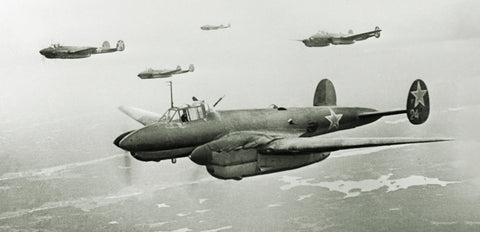
This Soviet Bomber was designed in a prison camp
The Soviet Union’s most successful twin-engine airplane of World War II was designed in a prison camp.
In 1937, the Soviets sent airplane designer Vladimir Petlyakov to prison because Stalin felt he had dragged his feet on a previous project. From the camp, Petlyakov was charged with developing a fast new fighter escort. But as mass production of Petlyakov’s VI-100 was about to begin in 1940, Stalin took notice of Germany’s tactical Blitzkrieg campaigns and ordered an immediate redesign. Stalin gave Petlyakov 45 days to modify the VI-100 into a dive- bomber and rushed the new Pe-2 tactical attack airplane into service in March 1941.
The Pe-2 was agile and fast, causing significant damage to German infantry while also holding its own against the Luftwaffe. German improvements to the Messerschmitt Me-109—the Pe-2’s main foe—and other evolving needs spurred the Soviets to develop heavy fighter, reconnaissance, and night fighter variants of the bomber. The Pe-2 proved so effective and versatile that the Soviets built 11,430 over the course of the war, more than any other twin-engine combat aircraft in their fleet—though few survive today.
